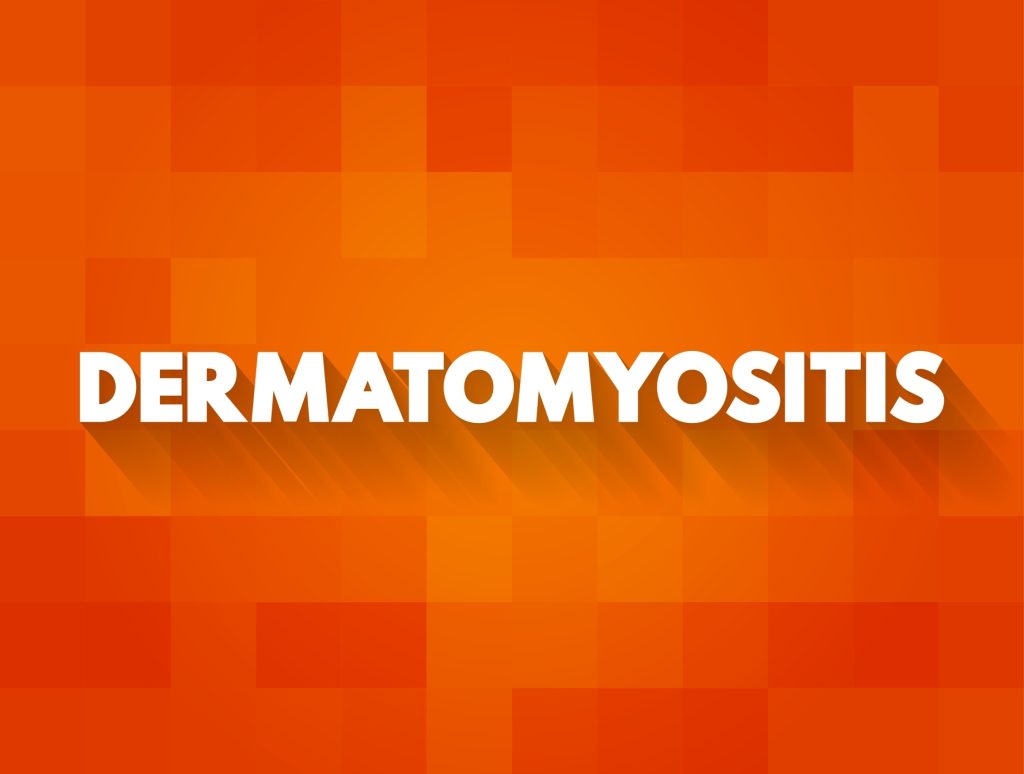
What is Dermatomyositis?
Dermatomyositis is a rare autoimmune disease that affects the muscles and skin. It is characterized by inflammation of the muscles (myositis) and skin (dermatitis), leading to muscle weakness and skin rashes [1]. It most often occurs in children aged 5 to 15 and adults aged 40 to 60. It affects women more often than men [2].
Cause
The exact cause of dermatomyositis remains unknown, but it is believed to be an autoimmune disorder, wherein the body’s immune system mistakenly attacks its own tissues. Genetic predisposition, environmental factors, and certain infections may contribute to the development of the disease. Additionally, some cases of dermatomyositis have been linked to exposure to ultraviolet light and certain medications [1].
According to doctors, this rare disease needs high caution and some of the most common causes of death are cancer, lung, cardiac complications, and infections.
Diagnosis
Dermatomyositis can typically be diagnosed through a comprehensive process involving several key steps. These include gathering a detailed patient history, conducting a thorough clinical examination, identifying characteristic physical findings, and performing specialized tests. Diagnostic criteria commonly include[1]:
Characteristic skin rash: The presence of a distinct skin rash, often exhibiting a purplish-red hue, is a hallmark feature of dermatomyositis. These rashes may appear around the eyes, cheeks, chest, or back.
Muscle weakness: Muscle abnormalities may begin with aches and weakness of the muscles of the shoulders, upper arms, hips, thighs, and neck. Muscles may be stiff, sore, tender, and, eventually, show signs of degeneration. Affected individuals may experience difficulty in performing daily tasks such as raising their arms, climbing stairs, combing hair, lifting objects, getting up from a chair, and swallowing food.
Elevated muscle enzyme levels: Blood tests may reveal elevated levels of certain muscle enzymes in the serum, such as creatine kinase (CK), aldolase, aspartate aminotransferase, and lactic dehydrogenase. These elevated levels are indicative of muscle inflammation and damage.
Abnormal Electromyography (EMG) findings: Electromyography (EMG) is a specialized test that records the electrical activity of skeletal muscles both at rest and during contraction. In dermatomyositis, EMG may reveal abnormal patterns of electrical activity, further supporting the diagnosis of muscle inflammation and dysfunction.
C. Treatment
Treatment for dermatomyositis aims to alleviate symptoms, suppress inflammation, and prevent disease progression [3].
a. Antiinflammatory medicines: There are steroid drugs or corticosteroids to ease inflammation in the body. They may be given by mouth or through an IV. The treatment of choice is a high dose of oral prednisone which must be initiated early to improve muscle weakness. Steroid therapy should result in symptom relief within 4 weeks of treatment after which the steroid dosage should be slowly reduced.
b. Immunosuppressive medicines: If the patient does not respond to steroids, immunoglobulins will be given directly into the bloodstream through an IV.
c. Physical therapy: In some cases, physical therapy may be recommended to help improve muscle strength and avoid the development of contractures. Along with physical therapy, diet also plays a major role in dermatomyositis. For example, patients with severe muscle inflammation should incorporate more protein in their diet to compensate for the loss. Additional non-pharmacological recommendations include avoidance and/or protection from the sun; elevation of the head of the bed; not eating before bedtime; and general bed rest.
D. Recent Event
The recent passing of Suhani Bhatnagar, known for her role as young Babita Phogat in the Bollywood movie “Dangal,” has saddened fans worldwide. Reports from The Times of India indicate that she battled dermatomyositis, a condition that likely contributed to her untimely demise. While specific details surrounding her passing may not be publicly disclosed, her struggle with dermatomyositis underscores the challenges faced by individuals living with rare autoimmune diseases.
Final takeaway
Dermatomyositis is a complex autoimmune disorder that can significantly impact the quality of life of affected individuals. While there is currently no cure for the condition, advancements in treatment options and ongoing research offer hope for improved management and outcomes. It’s essential for individuals experiencing symptoms suggestive of dermatomyositis to seek medical evaluation promptly. Additionally, raising awareness and supporting research efforts can help further our understanding of this rare disease and improve the lives of those affected by it.
(The article is written by Monalisa Deka, Senior Health Content Editor)
References
1. National Organization of Rare Disorders (NORD). Dermatomyositis. Available online: https://rarediseases.org/rare-diseases/dermatomyositis/#disease-overview-main
2. Dermatomyositis. Penn Medicine. Available online: https://www.pennmedicine.org/for-patients-and-visitors/patient-information/conditions-treated-a-to-z/dermatomyositis
3. Okogbaa J, Batiste L. Dermatomyositis: An Acute Flare and Current Treatments. Clin Med Insights Case Rep. 2019; 12: 1179547619855370. Available online: https://www.ncbi.nlm.nih.gov/pmc/articles/PMC6582284/